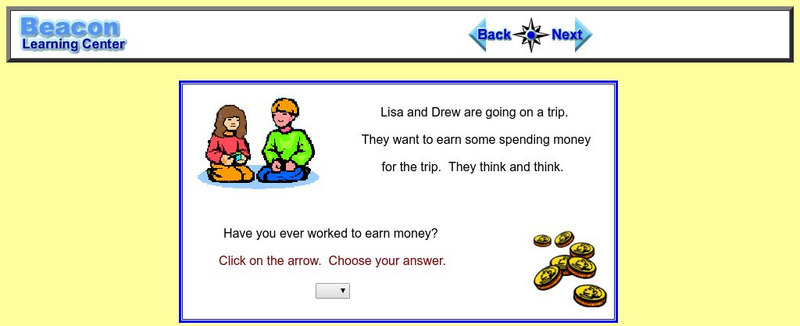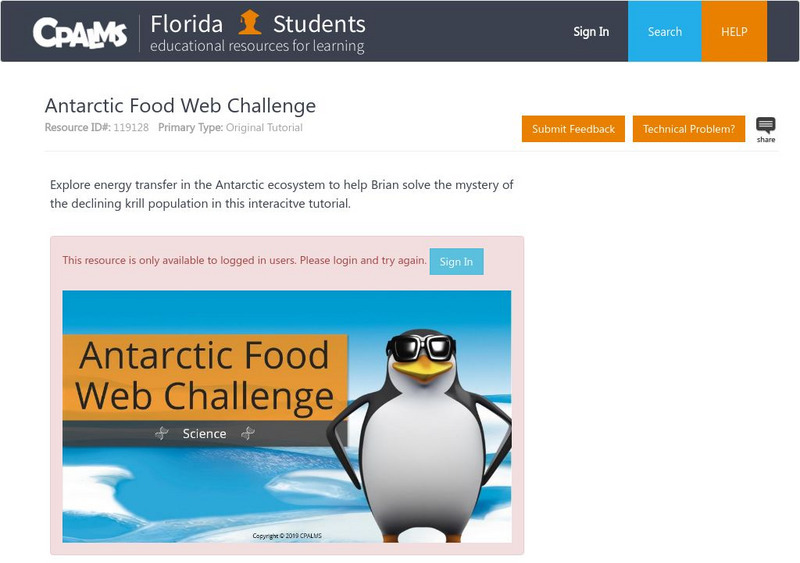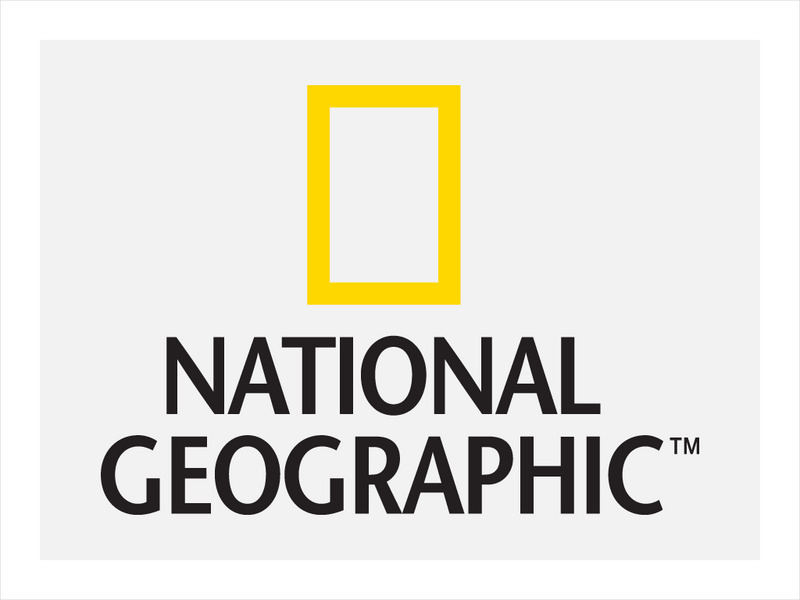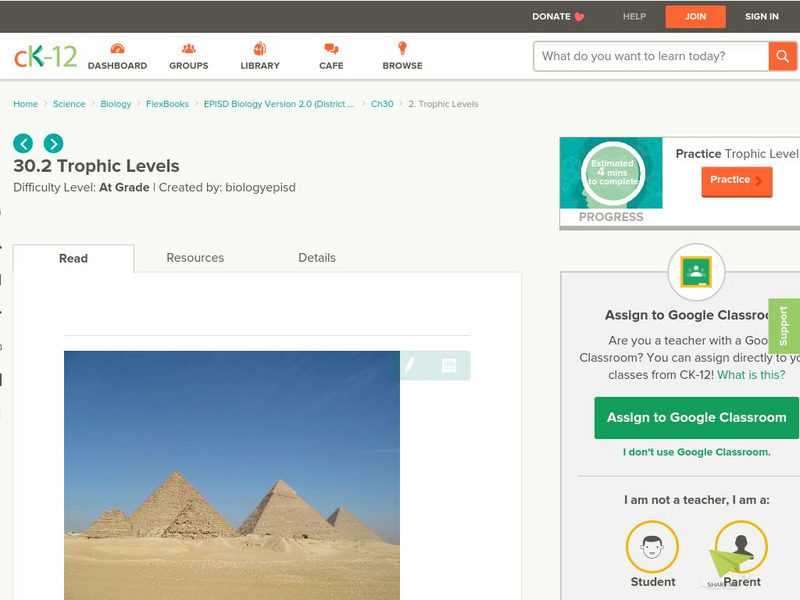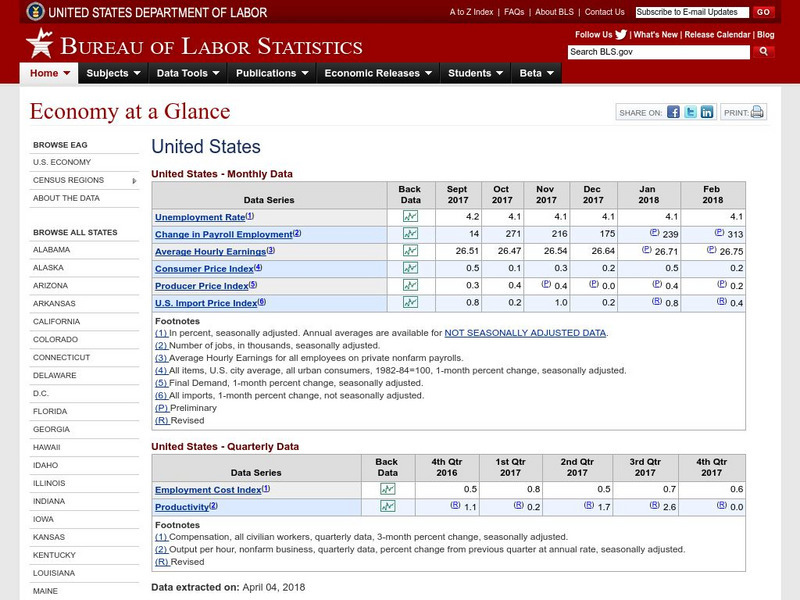Council for Economic Education
Econ Ed Link: Clipping Coupons
Explore this website to find out how and why consumers make choices on what products to buy. Learn how producers entice consumers into buying their products. This is a very informative lesson plan.
Beacon Learning Center
Beacon Learning Center: Business Buddies
Help characters Lisa and Drew learn simple economic principles by choosing what goods they will need for their lemonade stand. Continue exploring economic concepts by determining the producers, services, and consumers associated with the...
Council for Economic Education
Econ Ed Link: Incentives Influence Us
Find out more about the concept of incentives in our economy through this lesson plan. "You will identify incentives used at home and school."
Planet Pals
Planet Pals: The Food Chain
Omnivores, herbivores and carnivores are waiting for you. The food chain comes to life at this friendly site.
University of Michigan
University of Michigan: The Concept of the Ecosystem
Lesson looks at the definition of an ecosystem, biogeochemical cycles, and factors responsible for the differences between ecosystems.
Other
College of Du Page: Energy in an Ecosystem
Ecosystems contain two kinds of commodities: matter (nutrients) and energy. Nutrients cycle through the ecosystem, available for repeated use by organisms. These cycles of use and reuse are called biogeochemical cycles. Energy instead is...
SMART Technologies
Smart: Energy Flow in an Ecosystem
Students learn about Abiotic and Biotic Factors and how they affect the ecosystem in which an animal might live in.
CK-12 Foundation
Ck 12: Fifth Grade Science: Life Science: The Flow of Energy in an Ecosystem
A module that explains what an ecosystem is and how energy and matter move through them. Students will look at the different roles of plants and animals and at ecological relationships in food chains and food webs.
Council for Economic Education
Econ Ed Link: Us History: Inventors & Entrepreneurs
Young scholars will learn the difference between inventors and entrepreneurs. From talking with adults they will learn some of the benefits inventors and entrepreneurs have provided for society in the last 40 years.
Read Works
Read Works: The Eco Pyramid
[Free Registration/Login Required] This passage shares nonfiction information about ecological pyramids. This passage is a stand-alone curricular piece that reinforces essential reading skills and strategies and establishes scaffolding...
CPALMS
Florida State University Cpalms: Florida Students: Antarctic Food Web Challenge
Discover how energy flows as part of a food web. Identify the ultimate source of energy for organisms on Earth.
National Humanities Center
National Humanities Center: America in Class: America in the 1920s: Prosperity: Consumerism
The National Humanities Center presents collections of primary resources compatible with the Common Core State Standards - historical documents, literary texts, and works of art - thematically organized with notes and discussion...
Other
Insightful Interaction: Visualizations
A collection of interactive visualizations that were produced through analysis of economic, political, and market research data. Topics are diverse, e.g., military spending and trade, immigration, consumer spending, crime, unemployment,...
National Geographic
National Geographic: Coral Reef Food Web
Explore the food web in a coral reef with these illustration. Identify the consumers, producers, and decomposers that are located within this ecosystem. Site includes illustration exploring the different food chains as well as questions...
CK-12 Foundation
Ck 12: Episd: Trophic Levels
[Free Registration/Login may be required to access all resource tools.] Understand what trophic levels are and identify producers and consumers in a food web.
Annenberg Foundation
Annenberg Learner: The Habitable Planet: Ecology Lab
Create the parameters of your own ecosystem by choosing which producers and consumers live there. Visualize how the food web operates and species populations change. This simulator mimics the food web within a typical ecosystem and gives...
US Department of Labor
Bureau of Labor Statistics: u.s. Economy at a Glance
The seven major economic indicators for the U.S. economy are listed here in an easy to read chart. The seven indicators are unemployment rate, change in hourly employment, average hourly earnings, consumer price index, producer price...
TeachEngineering
Teach Engineering: Computer Simulation of the Sonoran Desert Community
The computer program's simulation of a Sonoran desert community should ultimately strengthen the student's comprehension of what is required for a natural ecosystem to sustain itself (remain in balance). This computer simulation program...
Massachusetts Institute of Technology
Mit: Open Course Ware: Principles of Microeconomics
An introductory course in the fundamentals of microeconomics. Includes a list of suggested readings, lecture notes, assignments, and exams.
CK-12 Foundation
Ck 12: Episd: Food Webs
[Free Registration/Login may be required to access all resource tools.] A close look at how animals and the environment interact with one another and specifically how the feeding relationships in a food web.
ClassFlow
Class Flow: Economics Vocabulary
[Free Registration/Login Required] This flipchart explains basic economics vocabulary such as producers, consumers, and different kinds of resources; limited, unlimited, natural and human. Student assessment items are included.
Shmoop University
Shmoop: Ecosystem Energy Flow
Explains the processes by which energy flows through an ecosystem. Covers the meanings of key vocabulary, e.g., types of producers and consumers, trophic levels, food webs, and the energy pyramid.
Science Struck
Science Struck: Rainforest Food Web
Explains the characteristics of tropical and temperate rainforests and what rainforest food webs look like.
Georgia State University
Georgia State University: Eco Connections: Conservation of Resources
During our exploration of each previous lesson, we have learned about many of the factors that contribute to the ongoing destruction of our environment. In our final lesson, we will make a holistic appraisal of the impact that each of...

